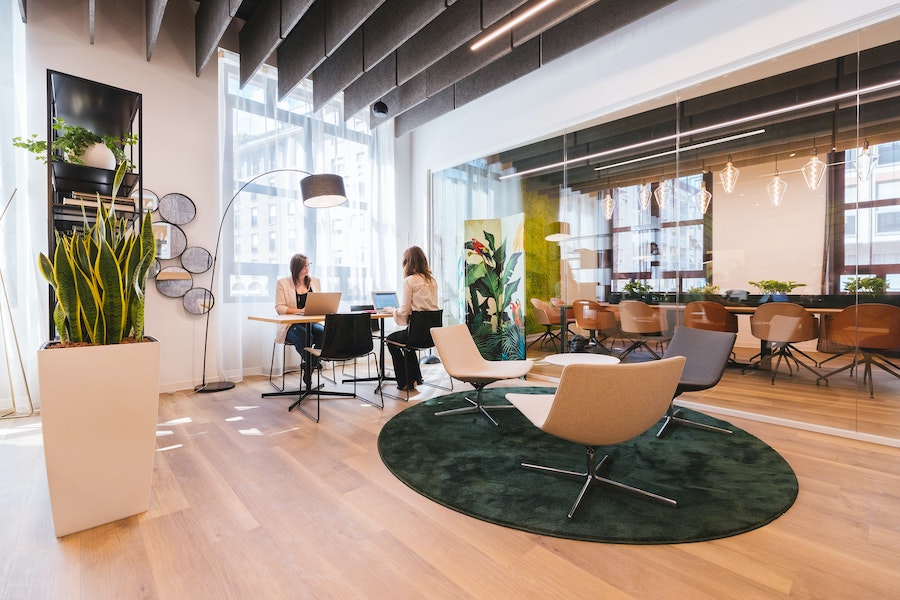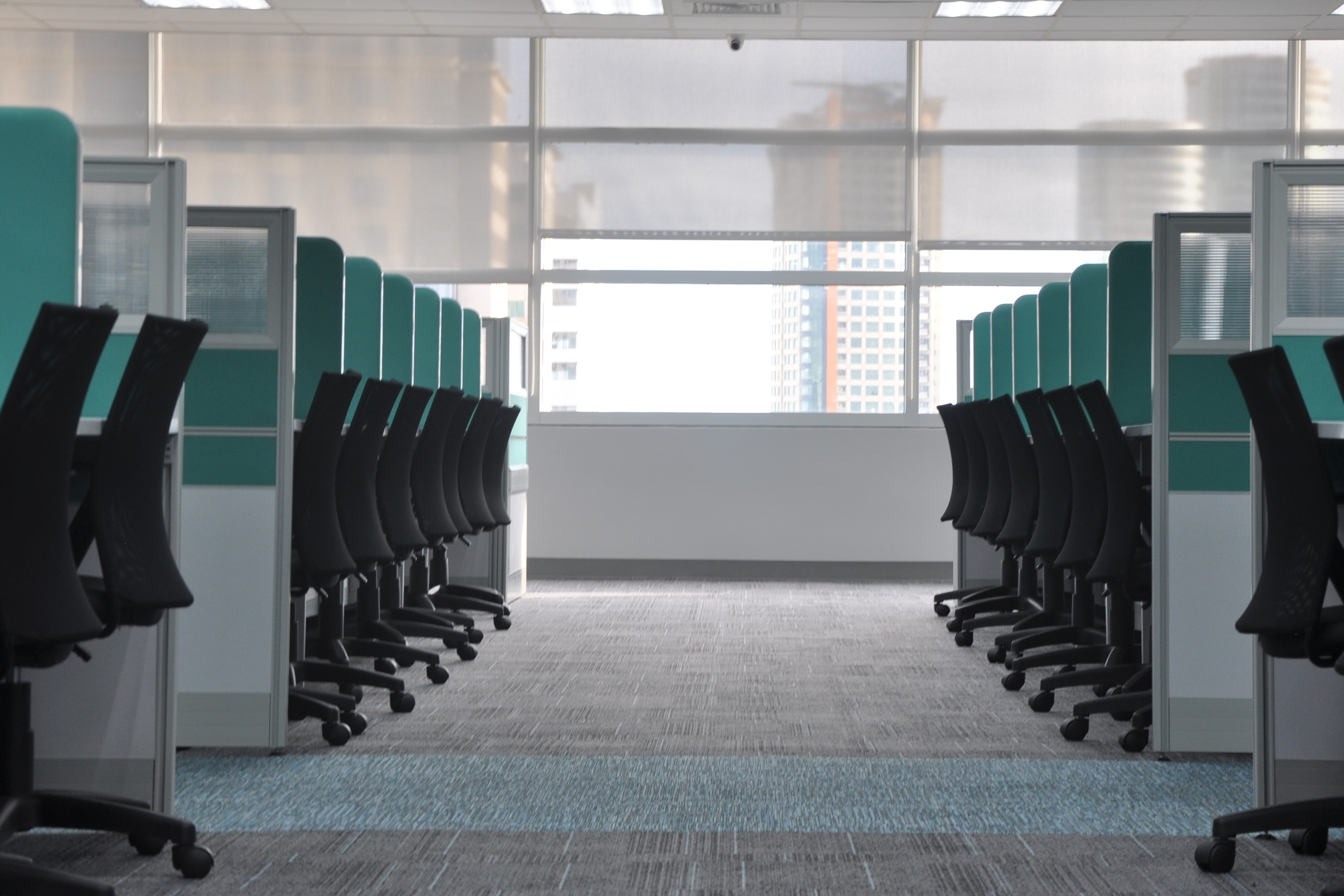Case Study
Optimising Space Use for a Sustainable, High Performance Workplace
The Challenge
How do you optimise space and resource use in an office, while improving employee experiences and business outcomes?
Industry: Sales Offices
Measurable Results
3 Floors
Grade A office space measured and analysed
600 employees
Impacted via improved employee experience
15-20%
Potential savings on electricity consumption
3 Floors
Grade A office space measured and analysed
600 employees
Impacted via improved employee experience
15-20%
Potential savings on electricity consumption
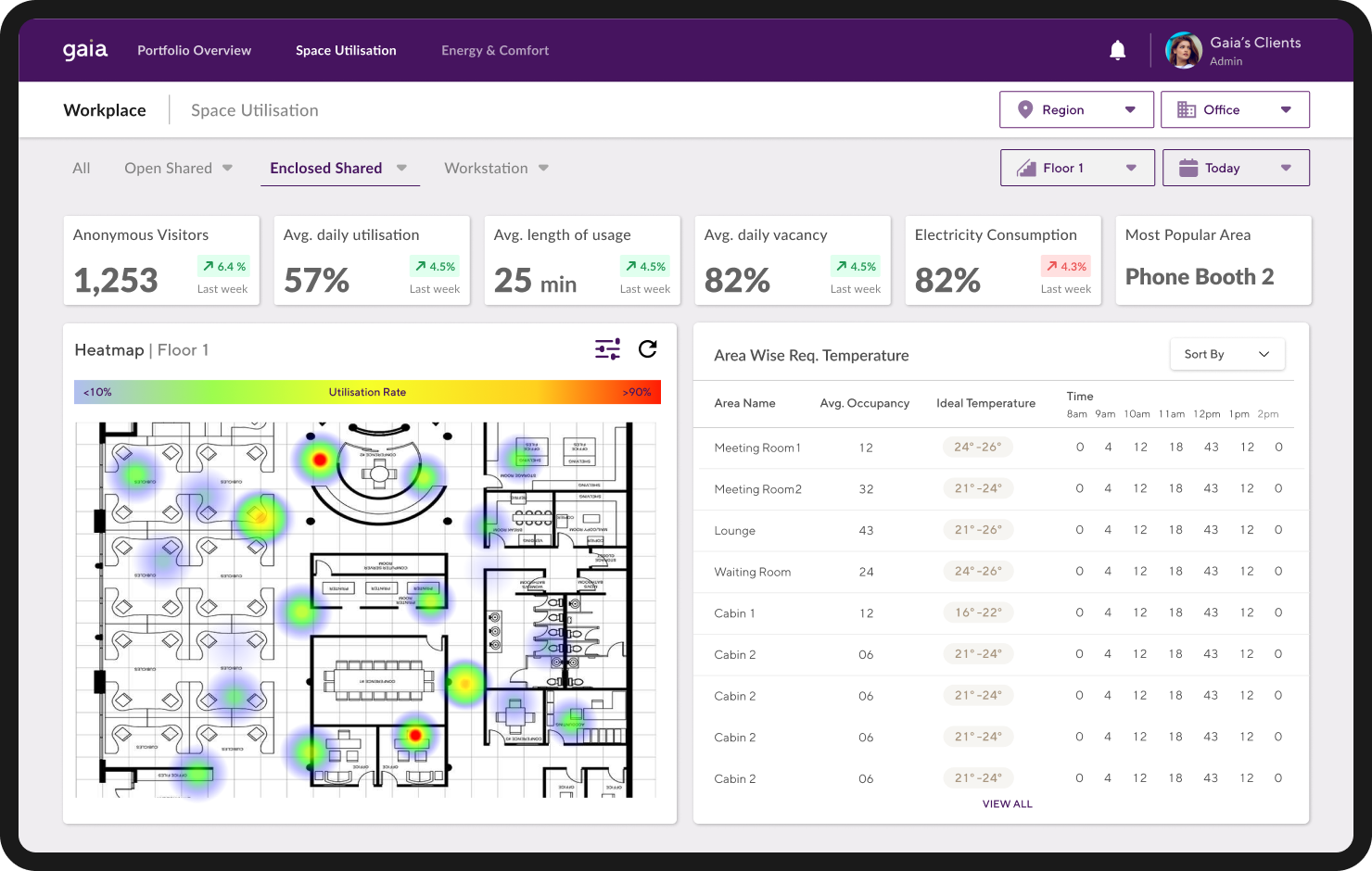
The Project
Located in a Grade A building in one of Asia’s most sought-after business districts, this workspace is an immersive, elegant environment designed to deliver best-in-class employee and guest experiences.The office features hi-tech infrastructure and detail-oriented service. The challenge was to bring clarity on how employees used the workspace, and leverage these insights to optimise energy, space and resource use. Ultimately, the project aimed to improve the property’s return on investment, while meeting sustainability goals.
Designing a sustainable “connected” office is more than smart lighting and efficient space management. It has far reaching effects — boosting employee productivity and wellbeing, attracting and retaining talent, improving operations and energy visibility for busy office managers. Meeting green goals positively impacts the bottomline.
What We Did
Measure and analyse space and resource use
At Neoma, we leverage a building's existing infrastructure to minimise the impact of additional hardware and resources. For this client we complemented existing CCTV cameras at entry / exits, digital door lock data and booking systems with sensors to collect missing or granular data. Neoma operates on a leasing model — reusing the same hardware for multiple projects — minimising costs on new hardware installation and management, and avoiding needless waste. Integrating spatial, employee, and anonymous behavioural data, the Gaia platform can quickly learn a building’s occupancy patterns to identify opportunities for energy savings and streamline staff allocation, effortlessly.
- Leveragedexisting digital touch pointsto collect occupancy data
- Sustainably leased hardware to ensure minimum infrastructure outlays
- Analytics dashboard with accurate data, so staff can take timely action based on real-time space occupancy to reduce energy consumption
- Cloud-based platform to implement insights and drive data-based decisions
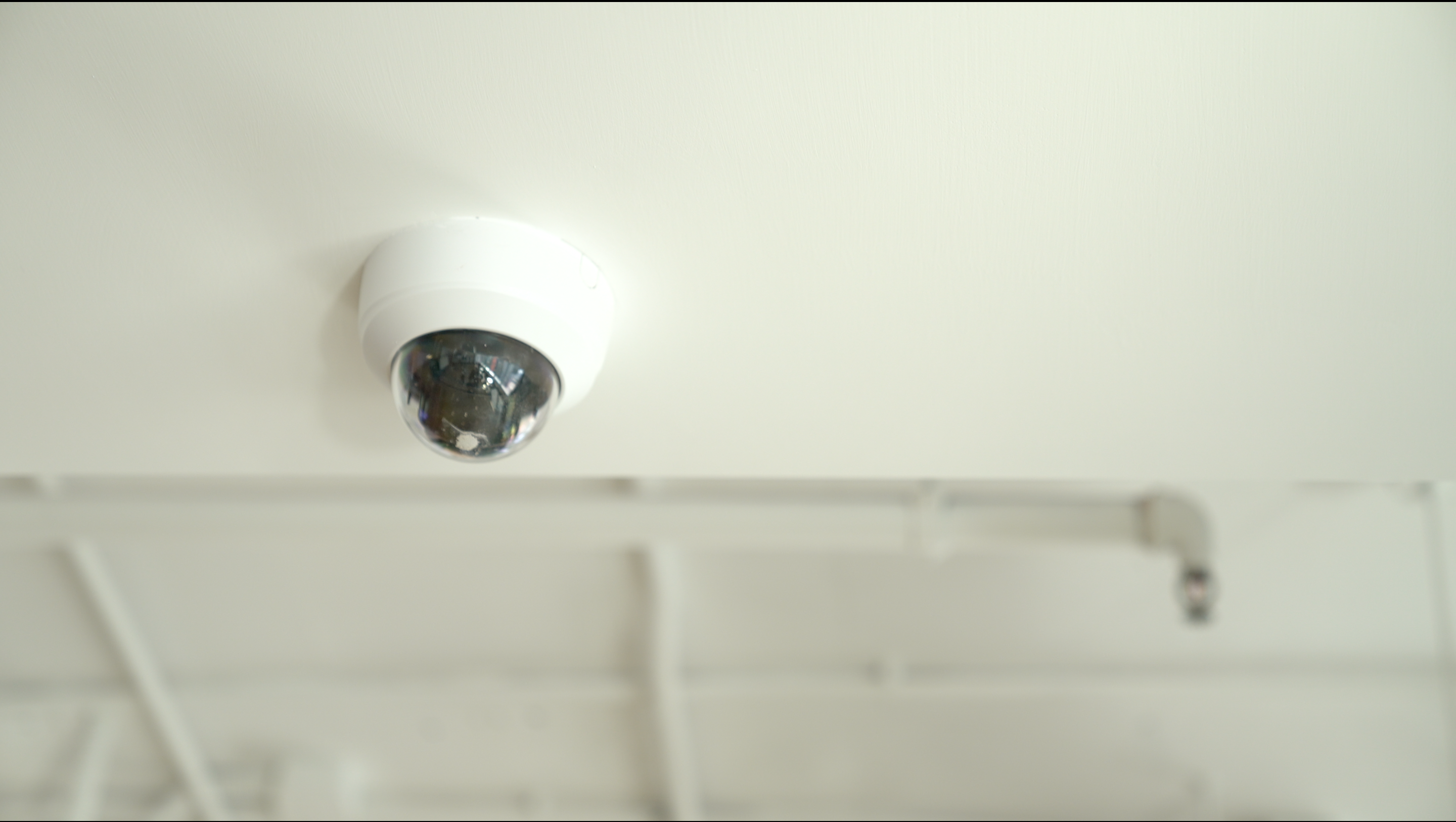
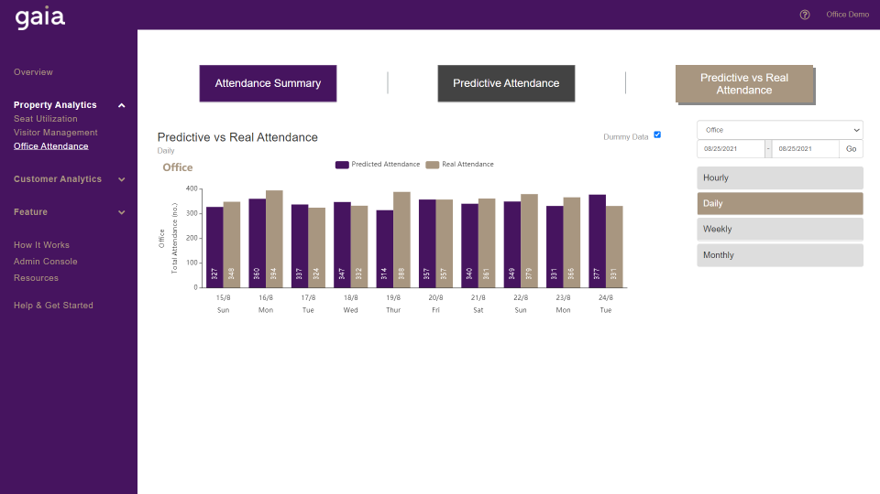
The Impact
Reduce operational costs and create human-centric spaces
Unused space in buildings generates 22M tons of CO2 per year. A connected building can decrease building and operational costs by ~45%. With timely data on actual employee attendance, offices can now identify under-utilised spaces, and right-size their property portfolio. With IoT and sensor technology it’s possible to control lighting, cooling and other energy-consuming systems, so that when space is unoccupied, energy is not expended. Together, this data allows office buildings to dramatically improve staff and employee efficiency, cut costs and create human-centric buildings designed for the future.
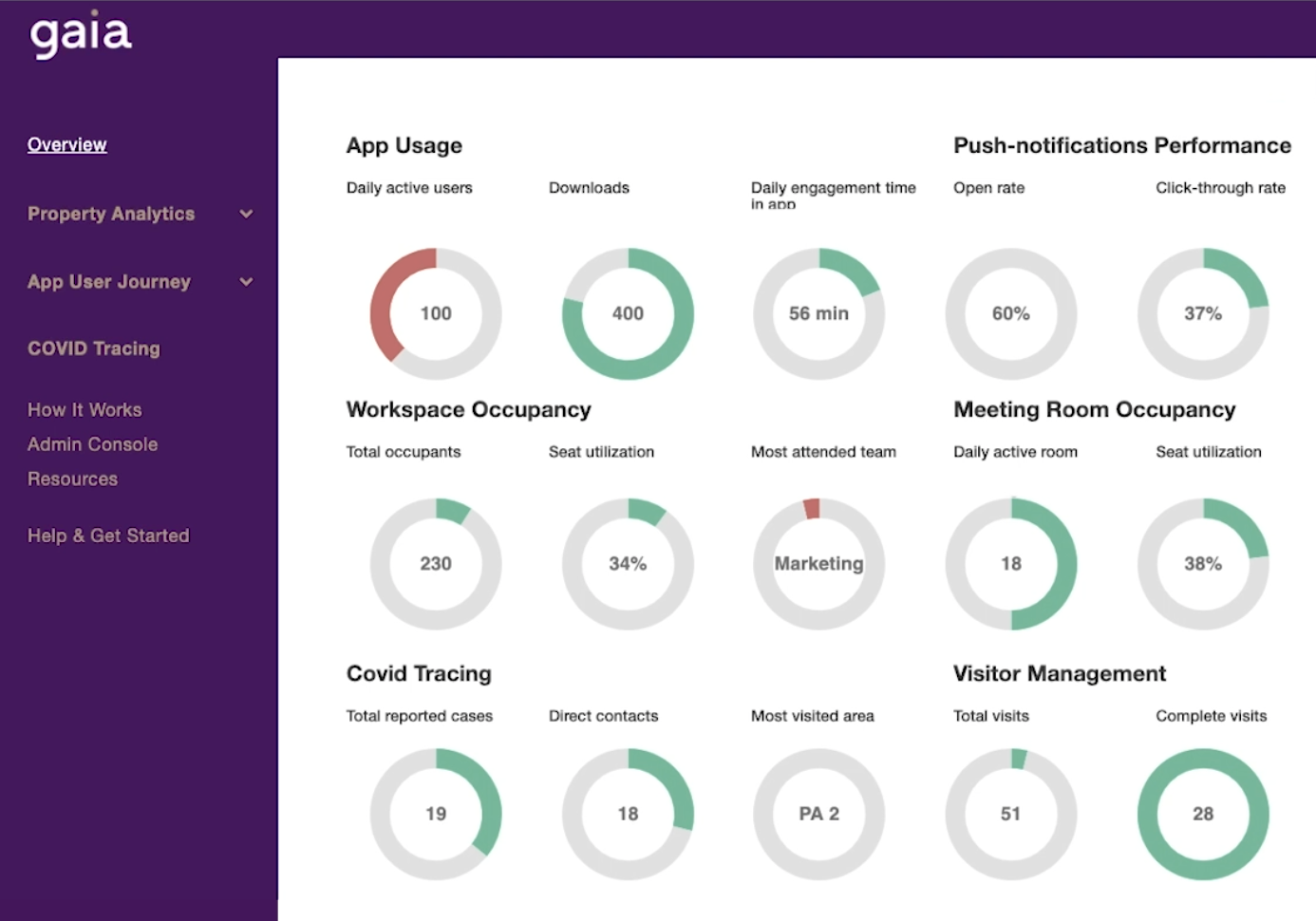
For companies
- Reduce operational costs
- Achieve sustainability goals
- Increase space ROI
- Operational transparency
- Intelligent staff allocation
- Optimise seating, air-conditioning and lighting, indoor air quality, cleaning schedules based on actual occupancy
- Portfolio and building efficiency benchmarking, predictive maintenance
- Improve employee loyalty
For employees
- Ensure employee comfort, wellbeing
- Enhanced workplace experiences
- Higher employee productivity
More Stories
See how businesses like yours deliver results with Gaia
